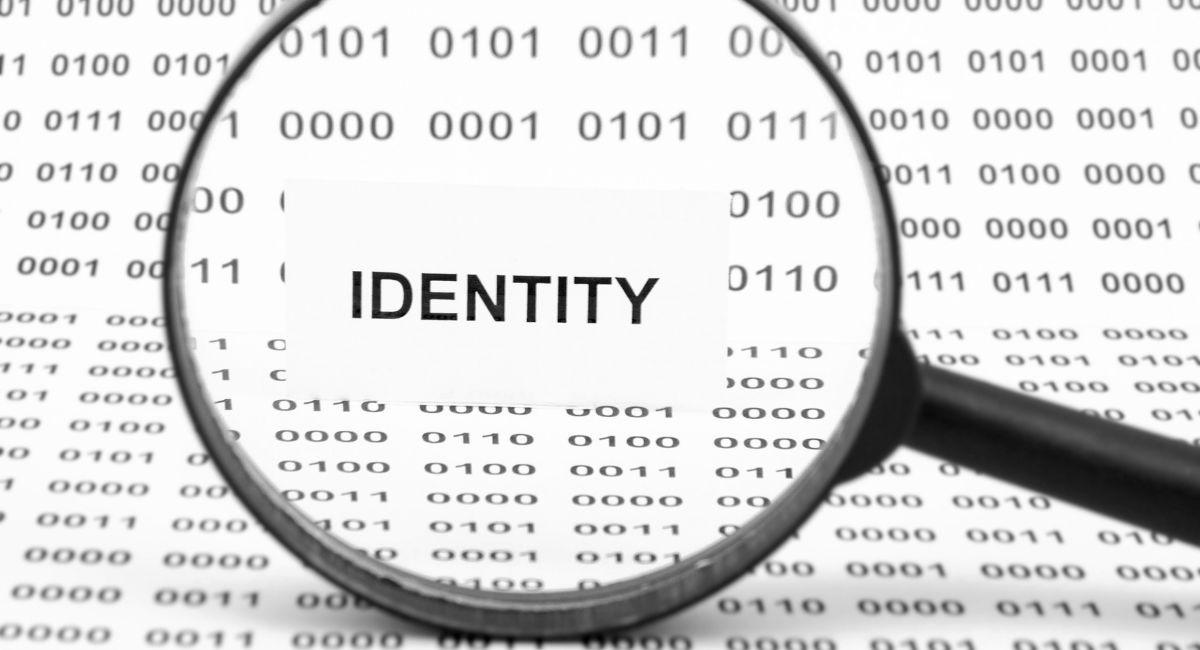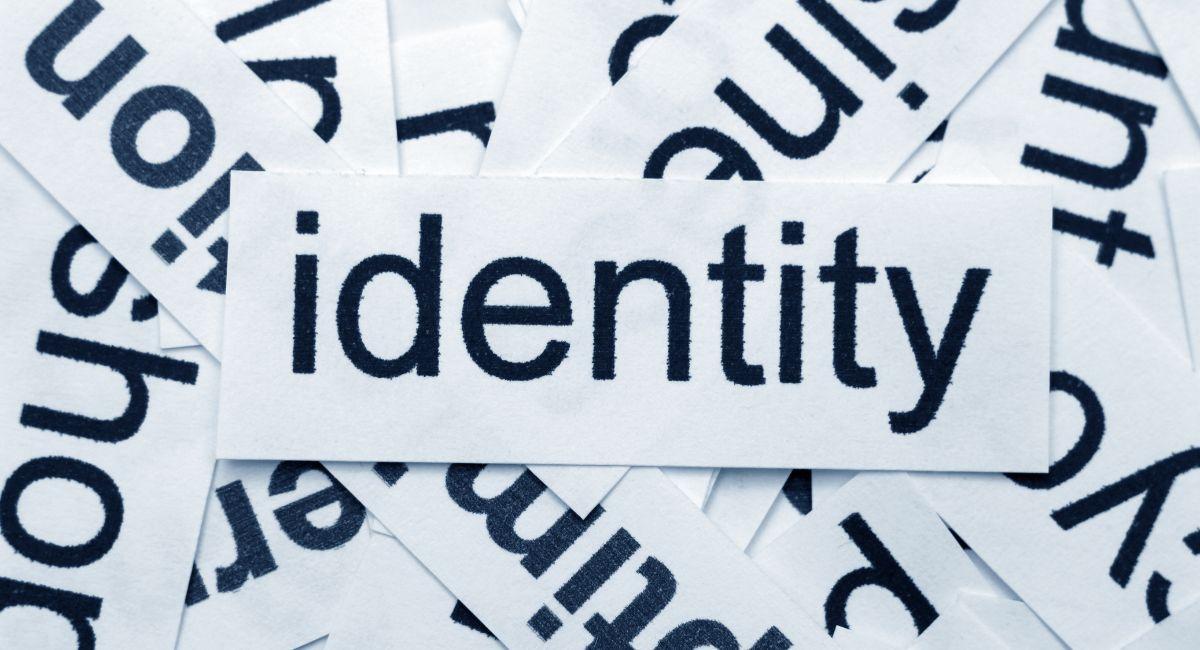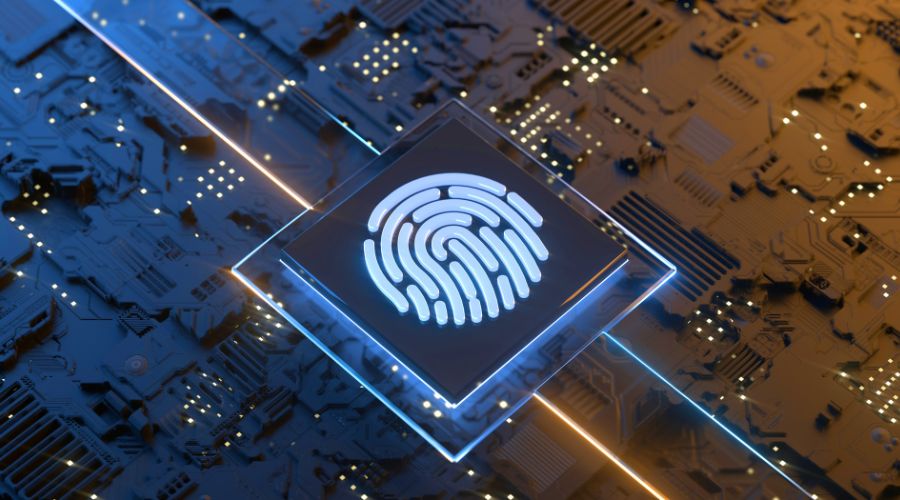January 16, 2024 by Diana Ambolis
394
The blockchain, with its decentralized architecture, has revolutionized how transactions are conducted and verified. One of the critical components in this paradigm shift is the concept of identity validation mechanisms. Unlike traditional systems where identity verification is often centralized, blockchain introduces innovative ways to establish and validate identities in a distributed environment. Foundations of Identity
The blockchain, with its decentralized architecture, has revolutionized how transactions are conducted and verified. One of the critical components in this paradigm shift is the concept of identity validation mechanisms. Unlike traditional systems where identity verification is often centralized, blockchain introduces innovative ways to establish and validate identities in a distributed environment.
Foundations of Identity Validation in Blockchain:
1. Decentralization and Trust:
At the core of blockchain’s identity validation is the principle of decentralization. Traditional systems rely on central authorities to validate identities, but blockchain distributes this responsibility across the network. This ensures a more resilient and tamper-resistant verification process.
2. Cryptographic Authentication:
Blockchain utilizes cryptographic techniques to secure and verify identities. Each participant in the network has a unique cryptographic key pair – a public key visible to others and a private key known only to the individual. This forms the basis of secure and private identity validation.
Key Components of Identity Validation Mechanisms:

Identity validation mechanisms involve a combination of technologies and processes aimed at ensuring the accurate and secure verification of an individual’s identity. Here are the key components of identity validation mechanisms:
- Biometric Authentication:
- Biometrics include fingerprint scans, facial recognition, iris scans, and voice recognition.
- These unique physical or behavioral traits provide a high level of accuracy in confirming an individual’s identity.
- Document Verification:
- This involves the scrutiny of official documents such as passports, driver’s licenses, or ID cards.
- Advanced technologies, like Optical Character Recognition (OCR), can be used to extract and verify information from these documents.
- Knowledge-Based Authentication (KBA):
- KBA involves verifying individuals based on knowledge only they should possess, such as passwords, PINs, or answers to specific personal questions.
- It’s often used as a supplementary measure but may not be sufficient on its own due to potential security risks.
- Multi-Factor Authentication (MFA):
- MFA combines two or more authentication factors, enhancing security.
- Common combinations include something you know (password), something you have (smart card or token), and something you are (biometric).
- Public Key Infrastructure (PKI):
- PKI uses a pair of cryptographic keys (public and private) to secure communication and verify the identity of users.
- It’s widely used in digital signatures and the encryption of sensitive information.
- Blockchain Technology:
- Blockchain provides a decentralized and tamper-resistant way to manage identity.
- Decentralized identifiers (DIDs) and verifiable credentials stored on the blockchain enhance security and privacy.
- Smart Cards and Tokens:
- Smart cards contain embedded microprocessors and memory, providing a secure way to store and process identity information.
- Tokens generate one-time codes for authentication, adding an extra layer of security.
- Machine Learning and Artificial Intelligence:
- These technologies can analyze patterns of user behavior and detect anomalies that may indicate fraudulent activity.
- Continuous monitoring and learning improve the accuracy of identity validation over time.
- Behavioral Biometrics:
- Analyzing patterns in user behavior, such as typing speed or mouse movements, adds an additional layer of security.
- This dynamic form of authentication helps detect suspicious activities.
- Zero-Knowledge Proofs:
- Zero-knowledge proofs allow a party to prove the authenticity of certain information without revealing the information itself.
- This technology enhances privacy in identity validation by providing proof without disclosing sensitive details.
- Regulatory Compliance Measures:
- Adherence to regulatory standards, such as GDPR, HIPAA, or specific industry regulations, ensures that identity validation mechanisms comply with legal requirements.
- Compliance with Know Your Customer (KYC) and Anti-Money Laundering (AML) regulations is especially important in various sectors.
- Mobile Authentication:
- Leveraging mobile devices for identity validation through methods like SMS-based codes or push notifications.
- Mobile devices often serve as a secure element for storing and managing authentication credentials.
In an effective identity validation system, these components work together to create a robust and secure framework, balancing the need for accuracy with user convenience and privacy. The combination of multiple factors and emerging technologies contributes to the evolution of sophisticated and reliable validation mechanisms.
Top 10 Applications of Identity Validation in Blockchain:

Identity validation in blockchain has numerous applications, playing a pivotal role in ensuring secure and trustworthy interactions within decentralized networks. Here are the top 10 applications of validation in blockchain:
- Decentralized Finance (DeFi):
- Identity validation in DeFi platforms ensures that participants comply with regulatory requirements, such as KYC and AML.
- It enables secure and transparent transactions, loans, and other financial activities within decentralized ecosystems.
- Supply Chain Management:
- Validating the identity of participants in a supply chain ensures the integrity of the information recorded on the blockchain.
- It helps in tracking and verifying the authenticity of products as they move through the supply chain.
- Digital Identity Management:
- Blockchain-based identity systems provide individuals with control over their digital identities.
- Users can securely manage and share their identity information, reducing the risk of identity theft and enhancing privacy.
- Cross-Border Payments:
- Identity validation is crucial in cross-border transactions, helping to comply with international financial regulations.
- It ensures that parties involved in transactions are legitimate and adhere to regulatory standards.
- Healthcare Records Management:
- Identity validation in healthcare blockchains ensures that only authorized personnel access patient records.
- It enhances data security and privacy while facilitating interoperability among different healthcare systems.
- Voting Systems:
- Blockchain-based voting systems leverage identity to ensure that only eligible voters participate in elections.
- It enhances the integrity of the electoral process by preventing fraudulent activities.
- Tokenized Assets and Securities:
- Identity validation is critical in tokenizing real-world assets and securities on the blockchain.
- It ensures compliance with regulatory requirements and provides a transparent and secure way to represent ownership.
- Intellectual Property Protection:
- Identity validation in blockchain helps establish and protect ownership of intellectual property.
- It ensures that creators and innovators have a verifiable record of their work, reducing the risk of unauthorized use.
- Smart Contracts and Legal Agreements:
- Identity validation is essential in smart contracts to ensure that parties involved are accurately represented.
- It adds an extra layer of security and trust to automated and self-executing contracts on the blockchain.
- Education Credentials Verification:
- Blockchain-based identity systems can be used to verify and authenticate educational credentials.
- It provides a tamper-resistant and easily accessible record of academic achievements, simplifying the verification process for employers and institutions.
These applications highlight the versatility and importance of identity validation in various sectors leveraging blockchain technology. By enhancing security, privacy, and trust, identity validation contributes to the broader adoption and acceptance of blockchain-based solutions across industries.
Challenges and Innovations in Identity Validation in Blockchain
 Identity validation in blockchain faces both challenges and ongoing innovations as the technology evolves. Here’s an overview of the key challenges and the innovative solutions addressing them:
Identity validation in blockchain faces both challenges and ongoing innovations as the technology evolves. Here’s an overview of the key challenges and the innovative solutions addressing them:
Challenges:
- Privacy Concerns:
- Challenge: Balancing the need for identity validation with user privacy is a constant challenge. Traditional systems may expose sensitive information during the validation process.
- Challenge: Storing personally identifiable information (PII) on the blockchain could lead to privacy risks.
- Regulatory Compliance:
- Challenge: Meeting regulatory standards, especially in industries like finance, requires adherence to KYC and AML regulations.
- Challenge: Different jurisdictions may have varying regulatory requirements, making compliance a complex task.
- Scalability Issues:
- Challenge: As blockchain networks grow, scalability becomes a concern. Current identity validation solutions may struggle to handle a high volume of transactions.
- Challenge: Scalability issues can lead to delays in identity verification, impacting user experience.
- Interoperability:
- Challenge: Lack of interoperability standards between different blockchain networks poses challenges for identity validation across platforms.
- Challenge: Seamless data sharing and verification between diverse blockchain ecosystems are essential but not always straightforward.
- User Experience:
- Challenge: Complex identity validation processes can result in a poor user experience, potentially discouraging users from engaging with blockchain applications.
- Challenge: Striking a balance between security and convenience is challenging.
Innovations:
- Self-Sovereign Identity (SSI):
- Innovation: SSI solutions enable users to own, control, and share their identity without relying on central authorities.
- Innovation: Decentralized identifiers (DIDs) and verifiable credentials provide a secure and privacy-preserving way to manage identity.
- Zero-Knowledge Proofs:
- Innovation: Zero-knowledge proofs allow one party to prove knowledge of specific information without revealing the information itself.
- Innovation: Enhances privacy in identity validation by providing proof without exposing sensitive details.
- Decentralized Biometrics:
- Innovation: Implementing biometric authentication directly on the blockchain ensures that sensitive biometric data is not stored centrally.
- Innovation: Smart contracts can facilitate secure and decentralized biometric verification processes.
- Layer 2 Solutions:
- Innovation: Layer 2 solutions, like sidechains or state channels, address scalability issues by processing transactions off the main blockchain.
- Innovation: Improves the speed and efficiency of identity validation processes.
- Oracles and External Data:
- Innovation: Oracles enable smart contracts to interact with external data sources for identity verification.
- Innovation: Allows integration with real-world information, enhancing the accuracy and reliability of identity validation.
- AI-Based Authentication:
- Innovation: Integrating artificial intelligence (AI) into identity validation processes enables continuous monitoring and adaptive security.
- Innovation: Analyzing user behavior patterns enhances security and helps detect anomalies.
- Regulatory Technology (RegTech):
- Innovation: RegTech solutions automate regulatory compliance processes, ensuring that identity validation meets the required standards.
- Innovation: Streamlines the often complex and time-consuming task of complying with diverse regulatory frameworks.
- Cross-Chain Identity Standards:
- Innovation: Developing standards for cross-chain identity verification improves interoperability between different blockchain networks.
- Innovation: Enables seamless sharing and verification of identity information across diverse ecosystems.
- Tokenization of Identity:
- Innovation: Representing identity as tokens on the blockchain allows for granular control over what information is shared.
- Innovation: Users can selectively disclose specific aspects of their identity, enhancing privacy.
- Mobile Authentication and Wallets:
- Innovation: Leveraging mobile devices for identity validation through secure wallets and authentication apps.
- Innovation: Provides a user-friendly and convenient way to manage and verify identity on the blockchain.
These innovations contribute to overcoming the challenges associated with identity validation in blockchain, making the processes more secure, private, scalable, and user-friendly. As the technology continues to advance, ongoing research and development are essential to address emerging challenges and further enhance the effectiveness of identity validation mechanisms on the blockchain.
The Future Landscape in Identity Validation Mechanisms

The future landscape of identity validation mechanisms in the blockchain is likely to be characterized by several key trends and advancements that address current challenges while unlocking new possibilities. Here’s a glimpse into the potential future developments in this domain:
- Decentralized Identity Ecosystems:
- Future systems are likely to see the rise of decentralized identity ecosystems where individuals have greater control over their identity.
- Implementation of self-sovereign identity (SSI) solutions will empower users to manage and share their identity across various platforms securely.
- Integration of Advanced Biometrics:
- Biometric authentication methods, such as facial recognition and behavioral biometrics, will become more prevalent for identity validation.
- Continued advancements in biometric technology will enhance accuracy and security.
- Enhanced Privacy through Zero-Knowledge Proofs:
- Zero-knowledge proofs will play a significant role in preserving privacy during identity validation.
- Ongoing research and development will likely lead to more efficient and versatile zero-knowledge proof systems.
- Convergence of Blockchain and AI:
- The integration of artificial intelligence with blockchain for identity validation will become more sophisticated.
- AI-driven solutions will provide adaptive security measures, detect anomalies in user behavior, and improve overall system resilience.
- Interoperability Standards and Cross-Chain Identity:
- Standardization efforts will lead to improved interoperability between different blockchain networks for seamless identity validation.
- Cross-chain identity standards will enable users to leverage their identity across diverse blockchain ecosystems.
- Regulatory-Compliant Identity Solutions:
- Regulatory technology (RegTech) solutions will continue to evolve, providing automated tools for ensuring compliance with regional and global regulations.
- Identity validation systems will adapt to changing regulatory landscapes, facilitating frictionless cross-border transactions.
- Tokenization of Identity and Digital Credentials:
- Tokenization will be more widely adopted for representing identity and digital credentials on the blockchain.
- Users will have the ability to selectively share specific aspects of their identity using tokenized representations.
- Improved User Experience:
- Future identity validation mechanisms will prioritize a seamless and user-friendly experience.
- Advances in user interface design, coupled with efficient backend processes, will enhance overall usability.
- Smart Contracts for Dynamic Identity Validation:
- Smart contracts will evolve to support dynamic and context-aware identity validation.
- Automated, self-executing contracts will take into account changing circumstances and adapt identity validation accordingly.
- Blockchain-Based Digital Wallets:
- The use of blockchain-based digital wallets for storing and managing identity-related information will become more prevalent.
- These wallets will serve as secure containers for various forms of identity credentials.
- Immutable Audit Trails and Forensics:
- Blockchain’s immutability will be leveraged to create tamper-proof audit trails for identity validation activities.
- Forensic capabilities will be enhanced, enabling the investigation of identity-related incidents with greater accuracy.
- Cross-Industry Collaboration:
- Increased collaboration between blockchain projects, industry players, and regulators will lead to more robust and universally accepted identity validation solutions.
- Shared standards and best practices will emerge to foster a unified approach to identity validation.
As the landscape evolves, it’s crucial to strike a balance between security, privacy, and usability. The future of identity validation in blockchain holds the promise of a more secure, user-centric, and globally interconnected digital identity ecosystem. Ongoing research, technological advancements, and collaborative efforts will be key drivers in shaping this landscape.
Conclusion:
In the dynamic landscape of blockchain technology, identity validation mechanisms stand as pillars of trust. Decentralization, cryptographic authentication, and innovative applications pave the way for a future where individuals have greater control over their digital identities. As the blockchain world continues to unfold, the synergy between identity validation and decentralized technologies promises a more secure, transparent, and inclusive digital ecosystem.




 Identity validation in blockchain faces both challenges and ongoing innovations as the technology evolves. Here’s an overview of the key challenges and the innovative solutions addressing them:
Identity validation in blockchain faces both challenges and ongoing innovations as the technology evolves. Here’s an overview of the key challenges and the innovative solutions addressing them:



























































